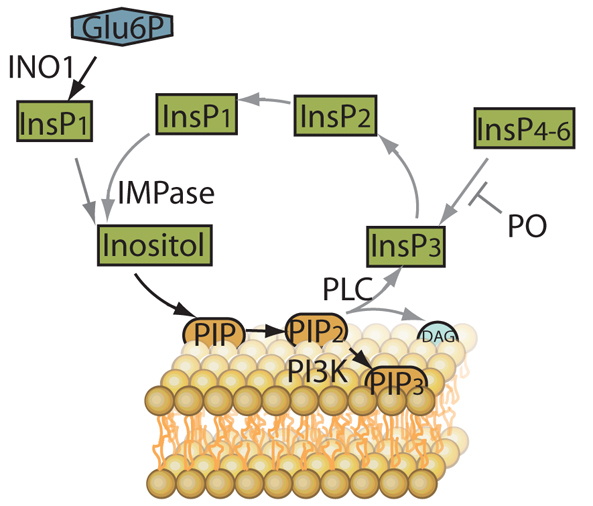Fig. 1.

Schematic of phosphoinositide generation and recycling. Enzymes involved in recycling of the phosphoinositide head group (inositol) include phospholipase C (PLC), which catalyses the production of inositol trisphosphate (InsP3) and diacylglycerol (DAG) from phosphatidylinositol diphosphate (PIP2), which in turn is produced from phosphatidylinositol monophosphate (PIP). Prolyl oligopeptidase (PO) regulates the formation of InsP3 from higher order inositol phosphates containing 4–6 phosphates (InsP4–6). InsP3 is recycled via inositol bisphosphate (InsP2) and inositol monophosphate (InsP1) to enable inositol monophosphatase (IMPase) to catalyse the production of inositol. De novo inositol synthesis is catalysed from glucose 6-phosphate (Glu6P) by myo-inositol-3P synthase (INO1). Type 1 phosphatidylinositol 3-kinase (PI3K) is responsible for the phosphorylation of phosphinositides at the 3′ position of the inositol head group, with products including phosphatidylinositol-(3,4,5)-trisphosphate (PIP3).
